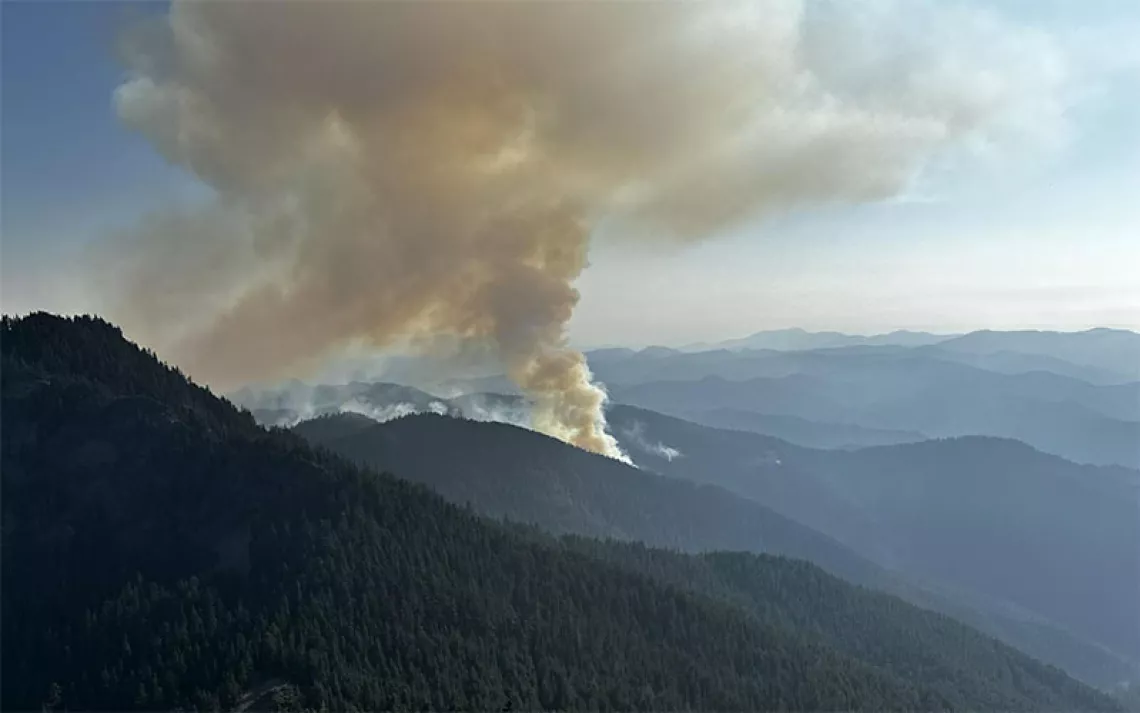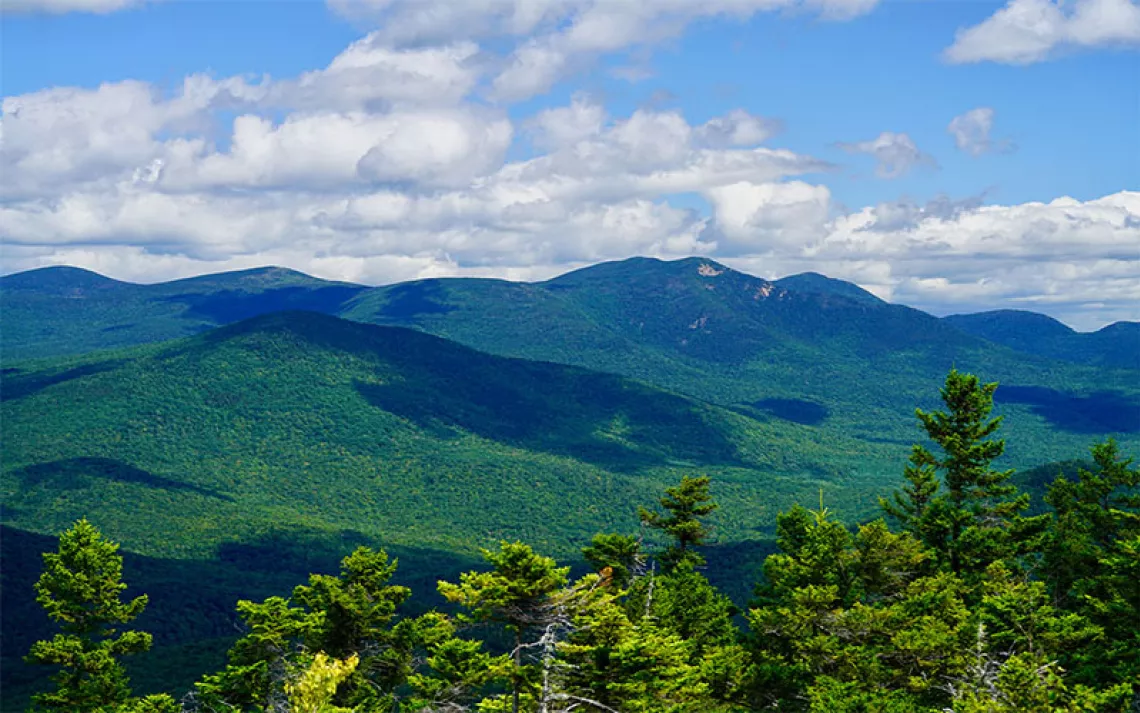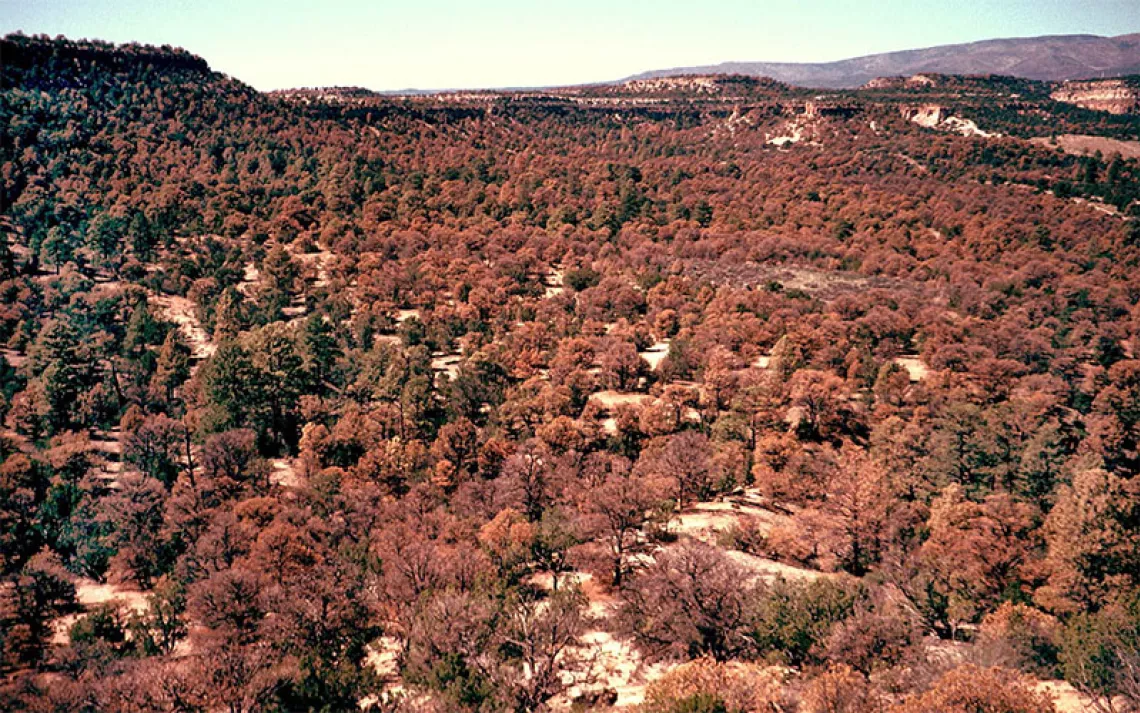Resurrecting Southern Appalachia’s Sky Islands
Red spruce is being replanted to reinvigorate one of the most endangered ecosystems
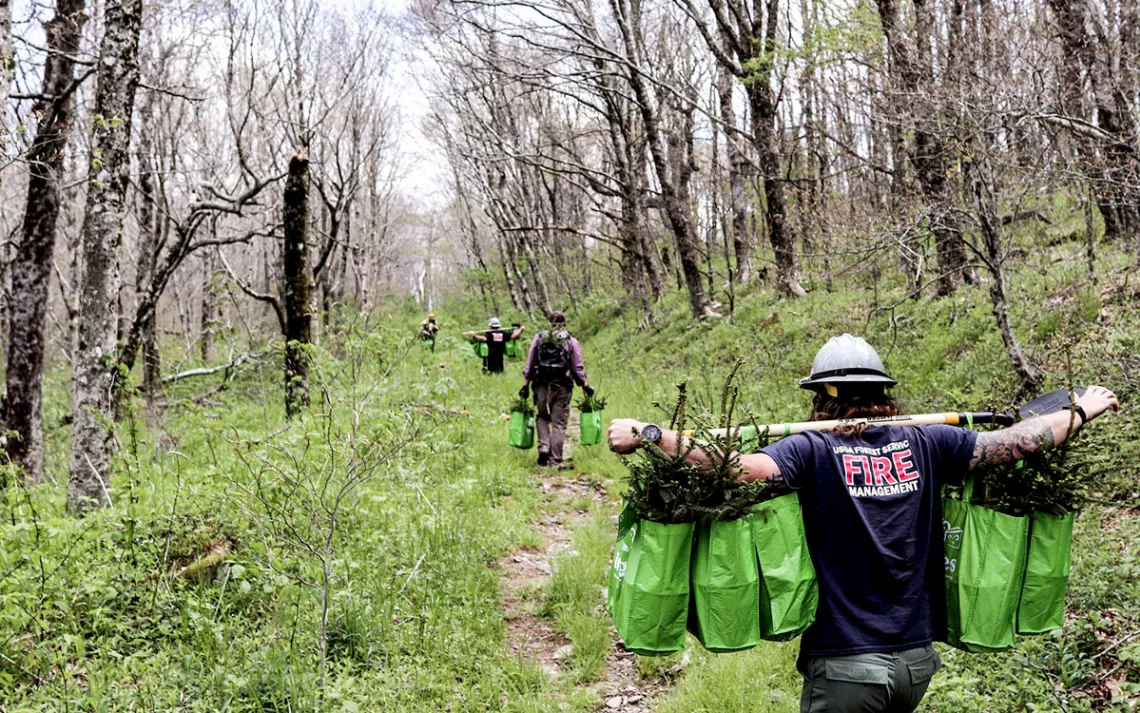
A work crew made up of government agency staff and university volunteers work to move young red spruce trees from the road into the forest where they'll be planted at Whigg Meadow in Cherokee National Forest. | Photo by Gary Peeples/USFWS, Courtesy of Southern Highlands Reserve
Each day last winter, Kelly Holdbrooks checked on 25 trays of 36 red spruce seedlings in multitiered greenhouse racks that she was temporarily caring for in her own backyard. When the temperature dropped below freezing, she pushed them into her garage. Her son helped water them. The largest seedling was merely three inches high—at their peak, these trees can grow to over 100 feet.
Holdbrooks was happy to watch over “baby trees that will one day venture into the forest to be enjoyed by millions of species, including humans” because these trees have a special role to play in a unique ecosystem that’s at risk. Spruce-fir forests are the second-most endangered ecosystem in the US, seeing a 35 to 60 percent reduction in the southern Appalachian Mountains over the past 150 years, according to the US Forest Service.
As the executive director of the Southern Highlands Reserve (SHR), a nonprofit native plant garden and research preserve in Lake Toxaway, North Carolina, Holdbrooks has been instrumental in expanding efforts to bolster this type of ecosystem in the “sky islands” of the southern Appalachians. Many of the peaks top 5,500 feet, making them the highest peaks in the eastern United States. Spread across North Carolina, Virginia, West Virginia, and Tennessee, they are often surrounded by mist and clouds.
“The sky islands are a relic, a remnant of what the old world looked like,” Holdbrooks said. “The air smells different. The soil is spongy. It’s just magical—like being in a J.R.R. Tolkien book.” SHR is currently building a state-of-the-art greenhouse to nurture generations of much-needed red spruce seedlings.
Red spruce and other species migrated southward into this region 18,000 years ago, during the last ice age. When glaciers receded, trees preferring cooler climes then moved to higher elevations, which became these islands of biodiversity. Much later, these spruce-fir forests were hit hard by human intervention. From the 1880s through the 1930s, many mountaintop forests were wiped out by unsustainable logging (known as “the great cut”) and fire. One burned for a month and left stumps that resembled graves in an area now called Graveyard Fields. Spruce never revived in this popular hiking area and elsewhere because the intense fires destroyed the soil components their seeds require to germinate. If a spruce managed to sprout, its growth was usually stunted by a lack of sunlight in the understory. In the mid-1950s, the balsam wooly adelgid, a deadly insect pest, targeted the area’s Fraser firs. Decades of acid rain have also damaged the ecosystem.
In late 2012, concern for these ecosystems inspired Katherine Medlock of the Nature Conservancy to call a meeting in Asheville for anyone interested in southern Appalachian red spruce restoration. She was inspired by the Central Appalachian Spruce Restoration Initiative (CASRI), which addresses similar mountain challenges, mainly in West Virginia. Medlock was expecting a low turnout, but 50 people showed up. Interested in joining forces with the Nature Conservancy and others to focus on their own region, SHR came bearing locally sourced red spruce seedlings, which they were growing in old hoop houses. Everyone wanted some.
“There was a hunger by [land] managers in the southern Appalachians to do this work, and they needed help,” said Medlock. She launched the Southern Appalachian Spruce Restoration Initiative (SASRI) along with three other women—Holdbrooks, Sue Cameron of the US Fish and Wildlife Service, and Chris Kelly of the North Carolina Wildlife Resources Commission—whom she called “the backbone of SASRI.” Members pooled knowledge and collaborated to create a restoration plan with best practice recommendations.
Cameron, a wildlife biologist, researches endangered and threatened species, including the Carolina northern flying squirrel and the spruce-fir moss spider. “One of the best things you can do for both of those species is to restore habitat that was lost,” she said. The spiders do best in the microclimate these trees create. The squirrel requires both red spruce and yellow birch trees to thrive. After the logging and fires, yellow birch grew back quicker than anything else, pushing the ecosystem “out of balance,” said Cameron. The red crossbill, northern saw-whet owl, and black-capped chickadee also rely on these ecosystems, as do 16 rare plant species.
Red spruce seedlings that did germinate on their own after the fires and logging, known as “wildlings,” are unable to fully contribute to the sky island microclimates. “Because they're shade tolerant, they'll sit in the understory for a long time,” said Cameron. “They might be knee-high and 75 years old.” Renewing these forests requires both planting young trees—at least 18 months old—and “releasing” the wildlings by selectively pruning hardwoods, so the spruce can access more light.
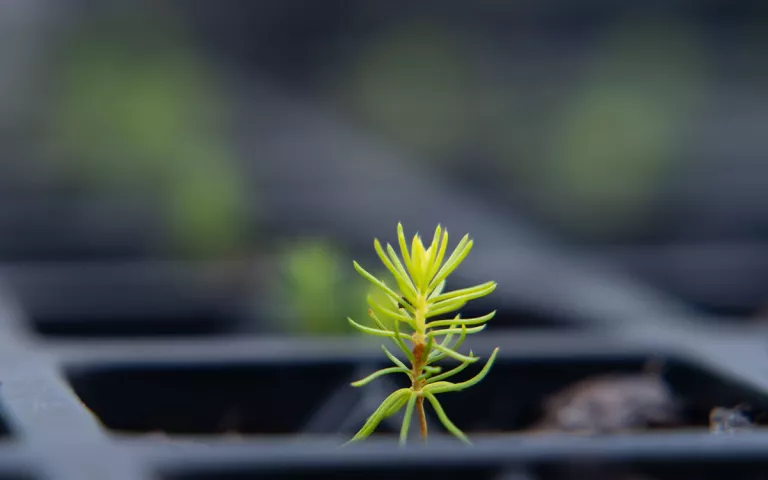
A red spruce seedling just beginning its life in a tray. Later, it'll be transplanted to the forest, where it could grow to be over 100 feet tall. | Photo courtesy of Southern Highlands Reserve
When Holdbrooks began to talk about building a state-of-the-art greenhouse where SHR could germinate and grow more red spruce seedlings, the Forest Service was interested. It started the wheels turning for a grant from the National Forest Foundation to kickstart the fundraising. Opening this fall, the new greenhouse will mimic the sky islands with a fogging system that replicates the cloud forest conditions. Because it’s also located at 4,500 feet, red spruce grown here boast a surprising 90 percent survival rate in the wild. The Forest Service asked SHR to grow 50,000 of these young trees the agency can plant across the southern Appalachian Mountains.
“When people get these trees, they’re getting the most dominant, the strongest, and the most viable, genetically,” said Holdbrooks.
Designated sky island teams gather cones whenever wild spruces produce a large number of seeds, a process called masting, which has become less predictable, probably due to climate change. To ensure SHR’s red spruce seedlings are resilient, the teams collect seeds that are as closely genetically linked as possible to the previous spruce generations in the targeted areas. Volunteers use dental tools to extract these seeds, which are then vacuum-sealed, labeled, and stored in freezers until it’s time to grow seedlings. SHR’s growing techniques encourage a robust root system and produce easily transportable young trees that will survive the trip to the planting sites, which are often challenging to reach.
”We’re doing our best to ensure our forests of the future are as resilient as they can be today,” said Medlock.
This fall, hundreds of SHR’s trees will be planted in Graveyard Fields, where multiple species can enjoy them, including humans.
Correction made August 13, 2024: An earlier version of this article misstated the age of the red spruce trees being planted. While Southern Highlands Reserve grows seedlings in its greenhouse, they are not planted until they are young trees, at least 18 months old.
 The Magazine of The Sierra Club
The Magazine of The Sierra Club

